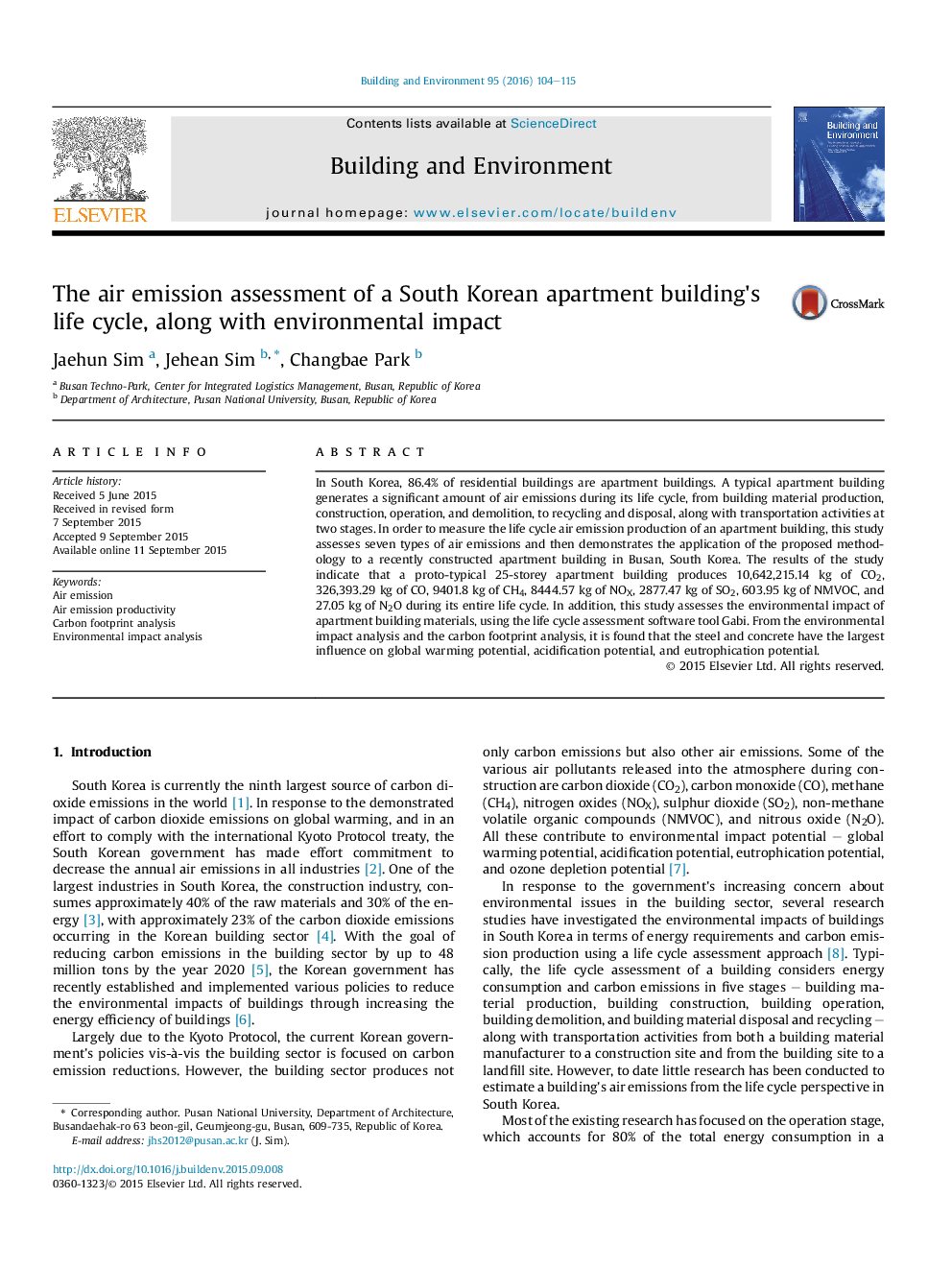| Article ID | Journal | Published Year | Pages | File Type |
|---|---|---|---|---|
| 247758 | Building and Environment | 2016 | 12 Pages |
•We estimate seven types of air emissions of an apartment building.•We simulate the apartment building's energy consumption.•We analyze the potential environmental impact of the apartment building.•We analyze the carbon footprint of the apartment building.•We measure the sustainable development of the apartment building.
In South Korea, 86.4% of residential buildings are apartment buildings. A typical apartment building generates a significant amount of air emissions during its life cycle, from building material production, construction, operation, and demolition, to recycling and disposal, along with transportation activities at two stages. In order to measure the life cycle air emission production of an apartment building, this study assesses seven types of air emissions and then demonstrates the application of the proposed methodology to a recently constructed apartment building in Busan, South Korea. The results of the study indicate that a proto-typical 25-storey apartment building produces 10,642,215.14 kg of CO2, 326,393.29 kg of CO, 9401.8 kg of CH4, 8444.57 kg of NOX, 2877.47 kg of SO2, 603.95 kg of NMVOC, and 27.05 kg of N2O during its entire life cycle. In addition, this study assesses the environmental impact of apartment building materials, using the life cycle assessment software tool Gabi. From the environmental impact analysis and the carbon footprint analysis, it is found that the steel and concrete have the largest influence on global warming potential, acidification potential, and eutrophication potential.
